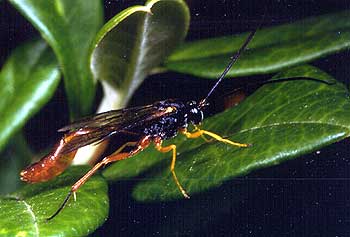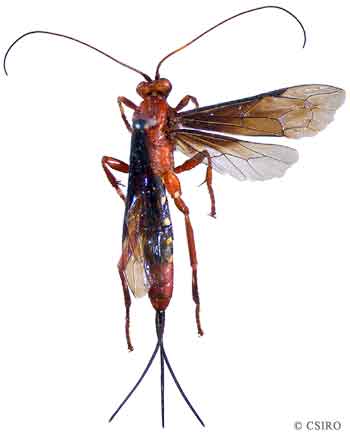
|
ICHNEUMONIDAE Ichneumon Wasps |
|
| ||||||||||||
|
This is one of the largest families of Hymenoptera and consists of small to large ichneumon wasps ranging in size from 2 to 120 millimetres in body length. They are mostly elongate and usually slender with long antennae and legs. The ovipositor is long and thin, often as long or longer than the body. Many are brightly coloured and may have wings coloured with blues or browns. Adults can often be seen during the day feeding on flowers of trees and shrubs.
Most ichneumon wasps are parasites of other invertebrates. The female wasp usually locates the food source of a host species then searches the surface with her antennae for a suitable host. Eggs are then laid on or in the body of the host where the larvae of the wasp feed either externally or burrow into the host to feed internally. The host will usually survive until the developing larva is fully grown, at which time the larvae either pupates inside the host or spins a cocoon outside.
These attractively coloured wasps can often be seen during the day flying around native blossoms or searching for hosts. They attack large caterpillars, laying their eggs on the host species with their long, sturdy ovipositors. For more ichneumonid species visit the Australian Insect Common Names - Ichneumonidae section found here. |

